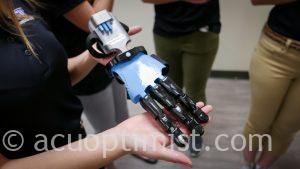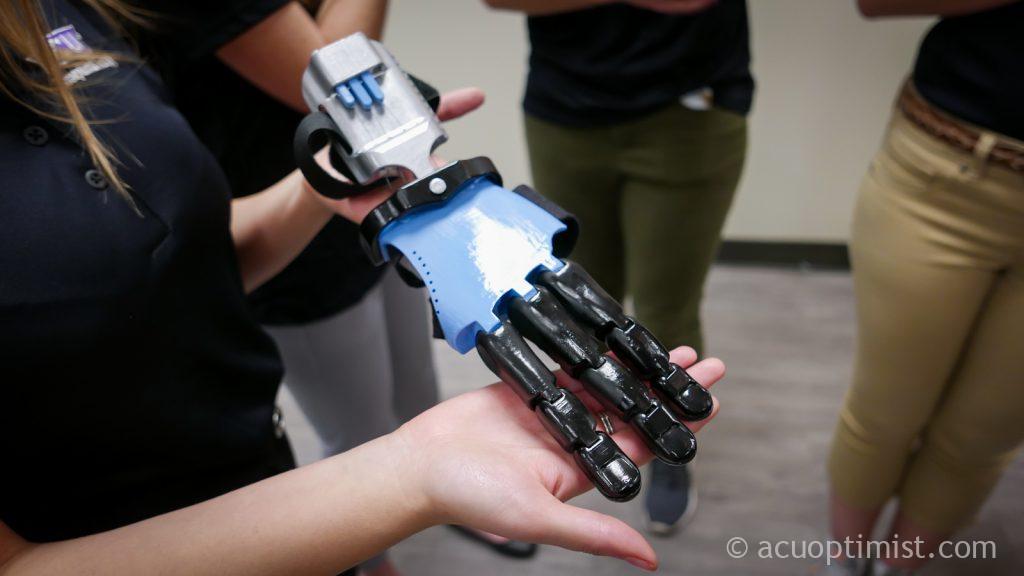Last week, the first year graduate students of the Intro to Making class in the Occupational Therapy program finished up their second project of the year: making prosthetic hands.
Lillie Thomas, assistant professor of occupational therapy has lead the Intro to Making class for two years now. However, the class was originally created by Neil Santana and the former director of the OT program, Hope Hodges, nearly five years ago. The class consists of three projects and introduces students to technology they will encounter regularly as occupational therapists.
The second project allows students to choose a specific demographic or population that would benefit from a prosthetic device and then find a design on Thingiverse or create their own design to meet the needs of the demographic. Once a design is selected student modify it to fit specific diagnosis of their patient.
Then students use 3D printers in the maker lab to create and assemble their designs. After perfecting the aesthetics of the final product, the teams present and test the prosthetic hands by attempting to pick up a water bottle.
“It’s fascinating to see them go from their first briefing of the assignment and us telling them about it, to Daren in the maker lab showing them how to go about this process and then they basically work together and problem solve together through the whole process,“ Thomas said.
This year the patient profiles ranged from pediatric malformation to adult trauma cases. Some designs were sleek and professional while others were playful and made to spark joy. Two of the pediatric teams designed their projects based off popular child characters: Spiderman and Barbie. Overall each design fit their patient profile in both functionality and style.
Throughout the project, students learn about activity analysis and using the maker lab. Jordan Talley, 2nd year OT student especially enjoyed the technology side of the project.
“I definitely learned that adaptive technology doesn’t need to be super expensive or take an expert to make,” Talley said. “We can make assistive devices for patients using low to no technology or high tech devices, like a 3D printer. We’re very blessed to be able to have access to these technologies now as students.”
However, one of the biggest things students learn is how to work in a group. Having students interact professionally and work together as a team to solve a problem for the clients prepares them for working in teams in the future.
“This project isn’t just about the final product,” Thomas said. “This is about the process of learning how to work with people who are sometimes are different then you, or are difficult to work with, and to be passionate about something and need to work through the problem. It’s a beautiful process to watch them grow as students alike that and professionals.”



